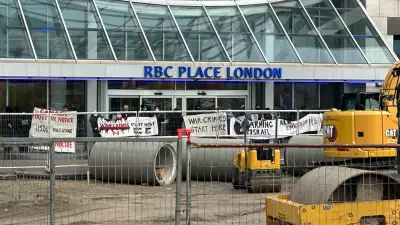
While major urban centers like Montreal struggled with low voter participation in the November 2 municipal elections, several small Quebec towns demonstrated remarkable civic engagement with turnout rates exceeding 70 percent. The contrast highlights how community size and competitive races can dramatically influence democratic participation.
Small Communities, Big Participation
The South Shore suburb of Calixa-Lavallée, a historic village named after the composer of Canada's national anthem, reported an impressive 78 percent voter turnout among its 500 residents. This more than doubled Montreal's participation rate of just 37 percent.
"Citizen participation here is always very strong, and this year was especially remarkable," said Pénélope Larose, the town's general manager. "We're a small municipality, so people know each other, they take an interest in what is happening and they get actively involved in community life."
According to data from Quebec's Municipal Affairs Ministry, provincial voter turnout increased to 41.3 percent compared to 38.7 percent in 2021. However, more than two dozen municipalities far surpassed this average, with about half-dozen towns achieving turnout rates over 80 percent.
Competitive Races Drive Engagement
Calixa-Lavallée experienced what officials called the "biggest elections in 20 years," with contested races for mayor and all six council positions. This represented a significant change from 2021, when all candidates were elected by acclamation.
"We saw a real surge of enthusiasm with several opinions and different visions that were expressed," Larose noted, emphasizing how competitive races energized the community.
The pattern repeated in Lac-Édouard, located in the Mauricie region, where approximately 80 percent of voters participated in selecting a new mayor after two decades of leadership from Larry Bernier. The outgoing mayor had been elected by acclamation for each of his five terms.
"I thought I could maybe make some room for others," said Bernier, who described his successor Annic Bouchard as a dynamic "young lady" in her 50s. "It's a good thing that there were two candidates instead of just one, because that's democracy."
Social Dynamics and Voting Behavior
Thierry Giasson, a political science professor at Université Laval, explained that multiple factors influence voter turnout, with perceived race competitiveness being particularly important. Provincial data confirms that municipalities with 2,000 or fewer residents consistently vote in higher percentages than their urban counterparts.
"When we're in a small municipality, you know your neighbors, everyone knows everything about everyone, and the electoral officers are our neighbors, brothers- or sisters-in-law, father, mother... in short, everyone knows who will vote and who won't," Giasson observed.
However, the professor noted that some small communities still experience low participation, possibly due to high numbers of part-time residents who maintain primary homes elsewhere.
Challenges of Municipal Governance
The enthusiasm in participating towns contrasted sharply with the reality that many Quebec municipalities didn't experience competitive elections at all. Just over half of municipal candidates in the province ran unopposed, resulting in more than 4,500 candidates—including 564 mayors—being elected via acclamation.
Outgoing Lac-Édouard mayor Larry Bernier highlighted the growing complexity of municipal leadership, which has expanded from basic service delivery to include tourism, economic development, and social initiatives. He revealed that the position often pays between $10,000 and $12,000 annually, which in his case would have amounted to roughly $3 per hour. Bernier chose to decline what he called a "ridiculous" salary.
Successful Engagement Strategies
In Desbiens, a town in the Saguenay—Lac-St-Jean region, election officials credited candidates with achieving a "historic" voter turnout of 72.38 percent. Isabelle Leduc, the city's president of elections, emphasized the effectiveness of traditional campaigning methods.
"They did a lot of door-to-door canvassing during election days. They made phone calls to encourage people to vote," Leduc explained. "They really did a great job campaigning and were very present in the field, compared to other years or other towns."
Additional factors contributing to Desbiens' success included a community desire for change and the implementation of mobile voting for the first time, which improved accessibility for residents of senior living facilities. Like other high-turnout municipalities, Desbiens benefited from multiple competitive races after previous elections featured mostly uncontested positions.
"I believe this was historic," Leduc declared. "We're celebrating our 100 years next year, and these will have been historic elections."
Among Quebec's five largest cities, only Quebec City managed to surpass a 50 percent voter participation rate on November 2, further highlighting the urban-rural divide in civic engagement. The exceptional turnout in communities like Calixa-Lavallée demonstrates how personal connections, competitive races, and direct outreach can revitalize local democracy even as larger cities struggle with voter apathy.





